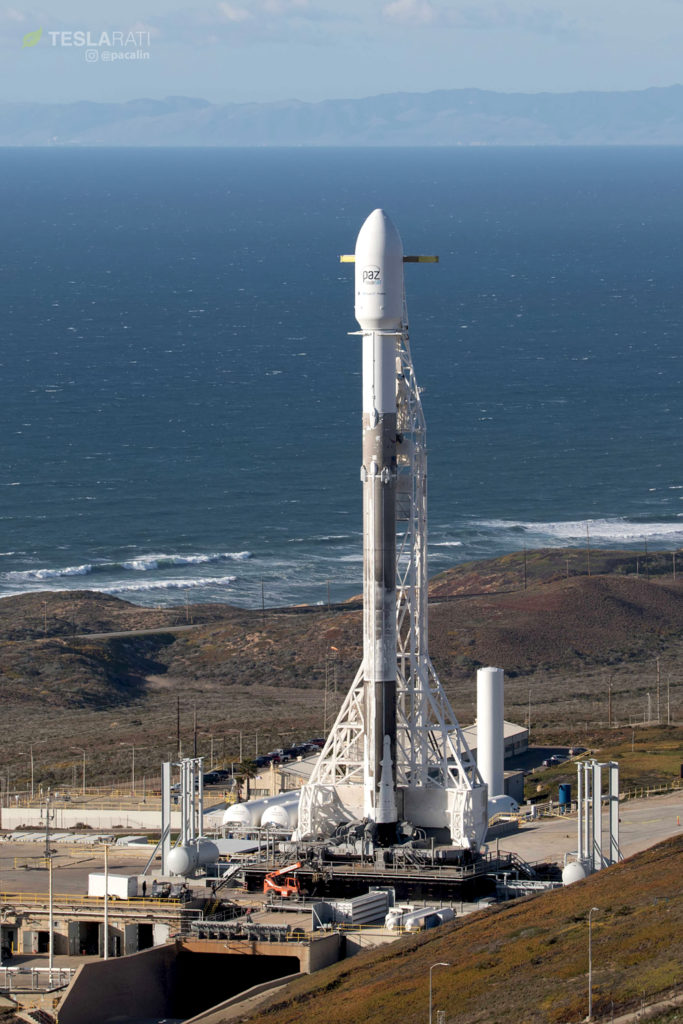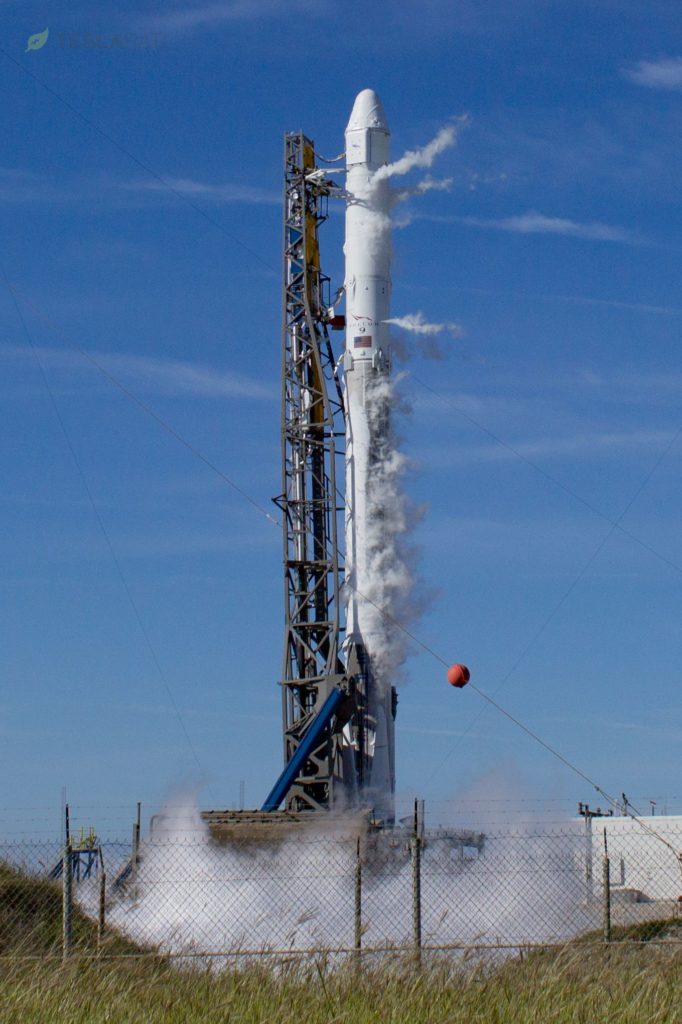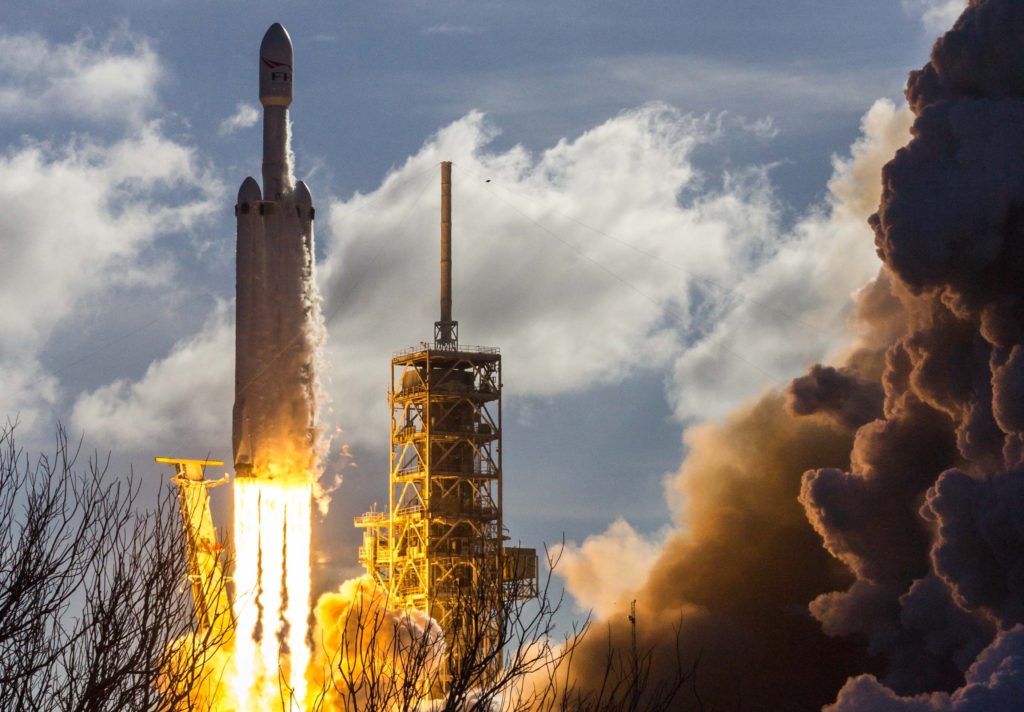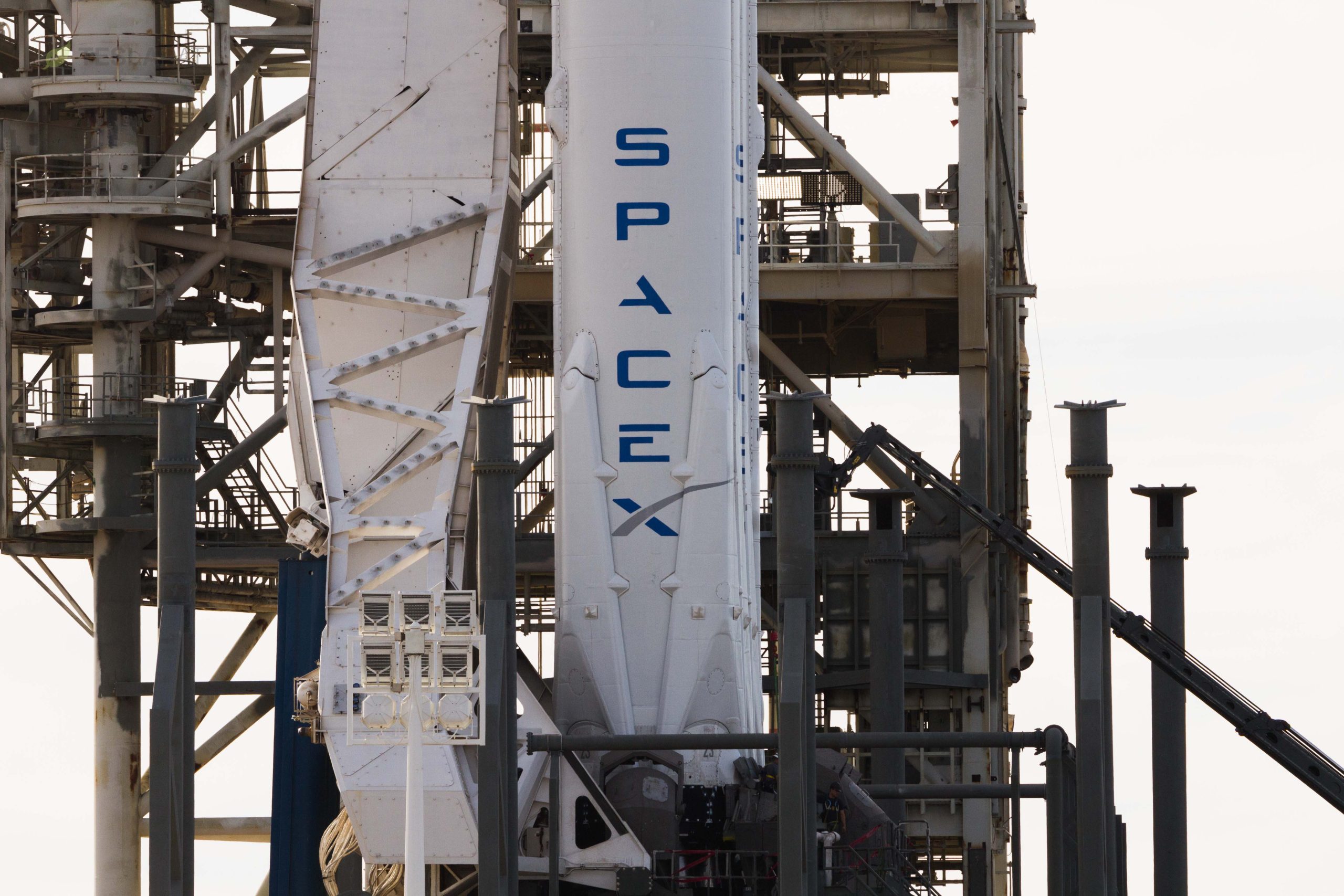
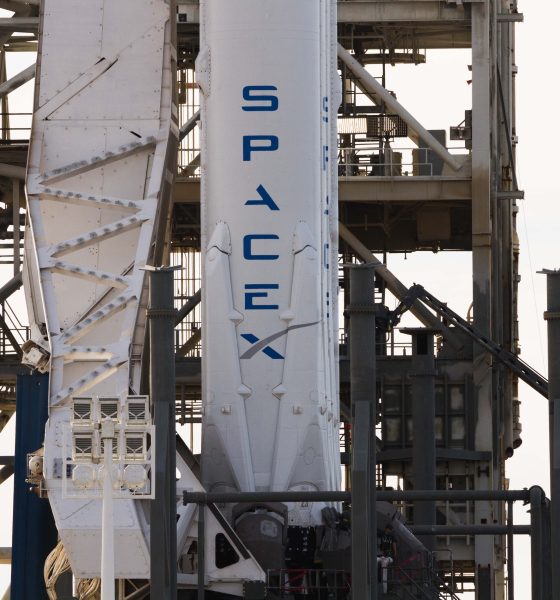
News
SpaceX to fly reused rockets on half of all 2018 launches as competition lags far behind
Speaking at SATELLITE 2018, SpaceX President Gwynne Shotwell reiterated the company’s commitment to and their customers’ acceptance of reusable rockets at the 2018, stating that SpaceX intends to fly reused boosters on at least half of their 2018 launch manifest.
Barring unforeseen circumstances, SpaceX is effectively on track to complete 30 separate missions this year with more than half flying flight-proven Falcon 9 (and Heavy) boosters. Thus far, the company has completed five launches – three flight-proven – in two months, perfectly extrapolating out to ~18 flight-proven missions and 30 total launches in 2018. While the middle weeks of March will not see any SpaceX launches, the company is on track to reach 11 flights total in late April/early March, six with reused boosters.
- SpaceX intends to launch three Falcon 9s from all three of its pads in just seven days. Pictured here their VAFB pad in California. (Pauline Acalin)
- LC-40, located in Cape Canaveral Air Force Station, is SpaceX’s second pad. (Tom Cross)
- Falcon Heavy roars off of LC-39A, SpaceX’s third operational pad. A fourth launch facility is under development in Texas. (Tom Cross)
Ignoring the tidal wave of reusable rockets
Ultimately, SpaceX’s scheduled launch cadence lends a huge amount of credence to Shotwell’s historically pragmatic claim. Assuming a successful introduction of Falcon 9 Block 5 sometime in April (currently April 5), SpaceX may even be able to get closer to flying reused boosters on two thirds of their 2018 launches, a truly jaw-dropping achievement for a year-old technology in an industry that previously saw minimal technological progress in rocketry for the better part of two decades, if not three or even four.
In almost every conceivable manner, SpaceX has taken a complacent industry by surprise, to such an extent that other major rocket builders have barely begun to develop their competitive responses to successful reuse. SpaceX’s main domestic and global competitors – ULA, Arianespace, and ILS – are at best five years away from more than dabbling in operationally reusable rocketry. ULA is in the best shape here, and their strategy of recovering just the engine segment of their future Vulcan rocket is unlikely to fly – let alone conduct the first real reuse of engines – before 2023 or 2024 at the absolute earliest, and reuse is by no means a public priority for the company.
SpaceX’s main competitors are at best five years away from more than dabbling in operationally reusable rocketry
At this point in time, Arianespace has been halfhearted for years in their attempts to seriously consider reusable rocketry. As of 2018, the closest they have gotten is a noncommittal study that would see the French and German space agencies field a Falcon 1-sized (tiny) vehicle to study the SpaceX approach to landing rockets. In the case of Arianespace, ULA, and ILS, their Ariane 6, Vulcan, and Proton Medium rockets currently under development for inaugural launches no earlier than 2020 have indeed all been explicitly designed to compete with SpaceX’s highly-competitive Falcon 9. Sounds promising, right? The reality, however, is that each distinct company has more or less designed their modernized rockets to compete with Falcon 9’s pre-reusability pricing. Even before SpaceX begins to seriously lower the cost of reused Falcon 9s at the customer level, their competitors are already incapable of beating the price of Falcon 9 and Falcon Heavy, at least without accepting net losses or leaning on government subsidies.
- Arianespace’s next-generation Ariane 6. (Arianespace)
- ULA’s upcoming Vulcan rocket. (ULA)
- ILS is developing a marginally different version of its Proton rocket, called Proton Medium. (ILS)
Arianespace’s Ariane 5 and ULA’s Atlas 5 and Delta 4 rockets do have impeccable and undeniably superior records of reliability, but SpaceX is making rapid progress towards enhanced reliability and unprecedented launch cadences. Falcon 9 Block 5 – SpaceX’s hard-won solution to rapid and cheaply reusable rocket boosters – is weeks away from its first launch, with something like six or more additional Block 5 boosters in the late stages of construction and assembly at SpaceX’s Hawthorne factory. The first prototype of BFR, a rocket designed with a fully-reusable booster and upper stage, has already begun to be assembled, with spaceship test hops scheduled to begin in 2019 and full-up orbital tests hoped to begin as early as 2020. Even with a pessimistic outlook on SpaceX’s BFR development prospects, the likelihood of orbital tests/operational launches beginning before the mid-2020s is incredibly high, barring insurmountable technological hurdles.
Whether or not SpaceX actually manages to begin its first flights to Mars in 2022 (even 2024-2026), BFR and its highly reusable orbital upper stage will swallow the launch industry whole if it manages to be even a tenth as affordable as its engineers intend it to be, and it will likely be in the late stages of hardware development and test launches before ULA, Arianespace, or ILS have even begun to operationally fly their tepid responses to reusability.

SpaceX’s BFR is being designed to launch crew, cargo, and fuel for unprecedentedly low prices. (SpaceX)
Follow us for live updates, behind-the-scenes sneak peeks, and beautiful photos from our East and West coast photographers.
Teslarati – Instagram – Twitter
Tom Cross – Twitter
Pauline Acalin – Twitter
Eric Ralph – Twitter

News
Tesla FSD fleet is nearing 7 billion total miles, including 2.5 billion city miles
As can be seen on Tesla’s official FSD webpage, vehicles equipped with the system have now navigated over 6.99 billion miles.

Tesla’s Full Self-Driving (Supervised) fleet is closing in on almost 7 billion total miles driven, as per data posted by the company on its official FSD webpage.
These figures hint at the massive scale of data fueling Tesla’s rapid FSD improvements, which have been quite notable as of late.
FSD mileage milestones
As can be seen on Tesla’s official FSD webpage, vehicles equipped with the system have now navigated over 6.99 billion miles. Tesla owner and avid FSD tester Whole Mars Catalog also shared a screenshot indicating that from the nearly 7 billion miles traveled by the FSD fleet, more than 2.5 billion miles were driven inside cities.
City miles are particularly valuable for complex urban scenarios like unprotected turns, pedestrian interactions, and traffic lights. This is also the difference-maker for FSD, as only complex solutions, such as Waymo’s self-driving taxis, operate similarly on inner-city streets. And even then, incidents such as the San Francisco blackouts have proven challenging for sensor-rich vehicles like Waymos.
Tesla’s data edge
Tesla has a number of advantages in the autonomous vehicle sector, one of which is the size of its fleet and the number of vehicles training FSD on real-world roads. Tesla’s nearly 7 billion FSD miles then allow the company to roll out updates that make its vehicles behave like they are being driven by experienced drivers, even if they are operating on their own.
So notable are Tesla’s improvements to FSD that NVIDIA Director of Robotics Jim Fan, after experiencing FSD v14, noted that the system is the first AI that passes what he described as a “Physical Turing Test.”
“Despite knowing exactly how robot learning works, I still find it magical watching the steering wheel turn by itself. First it feels surreal, next it becomes routine. Then, like the smartphone, taking it away actively hurts. This is how humanity gets rewired and glued to god-like technologies,” Fan wrote in a post on X.
News
Tesla starts showing how FSD will change lives in Europe
Local officials tested the system on narrow country roads and were impressed by FSD’s smooth, human-like driving, with some calling the service a game-changer for everyday life in areas that are far from urban centers.

Tesla has launched Europe’s first public shuttle service using Full Self-Driving (Supervised) in the rural Eifelkreis Bitburg-Prüm region of Germany, demonstrating how the technology can restore independence and mobility for people who struggle with limited transport options.
Local officials tested the system on narrow country roads and were impressed by FSD’s smooth, human-like driving, with some calling the service a game-changer for everyday life in areas that are far from urban centers.
Officials see real impact on rural residents
Arzfeld Mayor Johannes Kuhl and District Administrator Andreas Kruppert personally tested the Tesla shuttle service. This allowed them to see just how well FSD navigated winding lanes and rural roads confidently. Kruppert said, “Autonomous driving sounds like science fiction to many, but we simply see here that it works totally well in rural regions too.” Kuhl, for his part, also noted that FSD “feels like a very experienced driver.”
The pilot complements the area’s “Citizen Bus” program, which provides on-demand rides for elderly residents who can no longer drive themselves. Tesla Europe shared a video of a demonstration of the service, highlighting how FSD gives people their freedom back, even in places where public transport is not as prevalent.
What the Ministry for Economic Affairs and Transport says
Rhineland-Palatinate’s Minister Daniela Schmitt supported the project, praising the collaboration that made this “first of its kind in Europe” possible. As per the ministry, the rural rollout for the service shows FSD’s potential beyond major cities, and it delivers tangible benefits like grocery runs, doctor visits, and social connections for isolated residents.
“Reliable and flexible mobility is especially vital in rural areas. With the launch of a shuttle service using self-driving vehicles (FSD supervised) by Tesla in the Eifelkreis Bitburg-Prüm, an innovative pilot project is now getting underway that complements local community bus services. It is the first project of its kind in Europe.
“The result is a real gain for rural mobility: greater accessibility, more flexibility and tangible benefits for everyday life. A strong signal for innovation, cooperation and future-oriented mobility beyond urban centers,” the ministry wrote in a LinkedIn post.
News
Tesla China quietly posts Robotaxi-related job listing
Tesla China is currently seeking a Low Voltage Electrical Engineer to work on circuit board design for the company’s autonomous vehicles.

Tesla has posted a new job listing in Shanghai explicitly tied to its Robotaxi program, fueling speculation that the company is preparing to launch its dedicated autonomous ride-hailing service in China.
As noted in the listing, Tesla China is currently seeking a Low Voltage Electrical Engineer to work on circuit board design for the company’s autonomous vehicles.
Robotaxi-specific role
The listing, which was shared on social media platform X by industry watcher @tslaming, suggested that Tesla China is looking to fill the role urgently. The job listing itself specifically mentions that the person hired for the role will be working on the Low Voltage Hardware team, which would design the circuit boards that would serve as the nervous system of the Robotaxi.
Key tasks for the role, as indicated in the job listing, include collaboration with PCB layout, firmware, mechanical, program management, and validation teams, among other responsibilities. The role is based in Shanghai.
China Robotaxi launch
China represents a massive potential market for robotaxis, with its dense urban centers and supportive policies in select cities. Tesla has limited permission to roll out FSD in the country, though despite this, its vehicles have been hailed as among the best in the market when it comes to autonomous features. So far, at least, it appears that China supports Tesla’s FSD and Robotaxi rollout.
This was hinted at in November, when Tesla brought the Cybercab to the 8th China International Import Expo (CIIE) in Shanghai, marking the first time that the autonomous two-seater was brought to the Asia-Pacific region. The vehicle, despite not having a release date in China, received a significant amount of interest among the event’s attendees.
